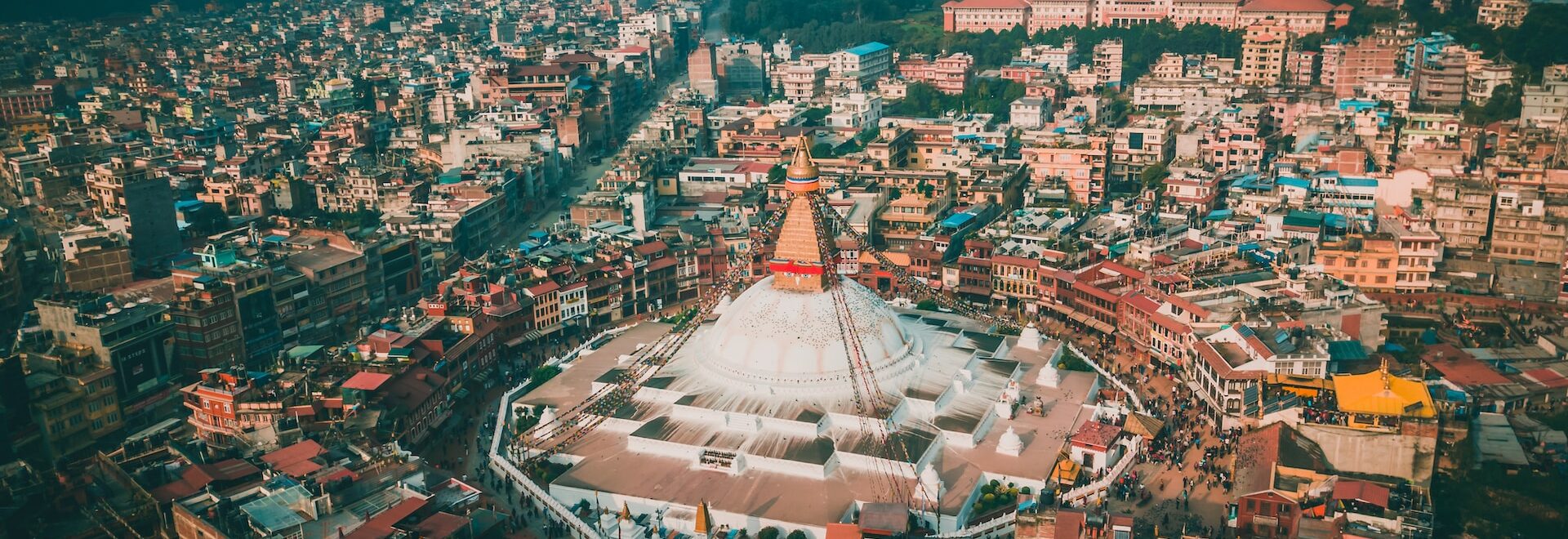A country rich in culture and overflowing with holy sites, there are more than 10,000 temples in Nepal. Kathmandu Valley itself boasts seven UNESCO World Heritage Sites, so it’s no surprise that it’s referred to as “The Land of the Temples”. The spectacular capital city of Nepal has some of the most famous temples in the world within its limits, making it a fantastic place to go if you want to drink in Nepalese culture and visit some of the world’s largest and most sacred monuments and temples. Kathmandu’s temples are truly breathtaking, which is why we’ve compiled a list of the absolute must-sees just for you.
Boudhanath Stupa
Opening hours: 24 hours a day | Entry: NPR 400
The most famous among Kathmandu’s temples, Boudhanath Stupa is the largest stupa in Nepal. Not only that, but the site is of special importance to Nepalese and Buddhist people and holds great spiritual significance. Built in the 14th century, the temple’s large white dome and intricate gold spire are easily recognisable from far away and attract locals, tourists and devotees of different faiths. A historically significant site, the surrounding area has been a refuge for Tibetans and many others and the stupa is also rumoured to contain the entombed remains of the Kassapa Buddha, who is said to have lived 2,000 years after his enlightenment. Walk clockwise around the stupa and spin the prayer wheels along the way for good luck, wander through the narrow streets around the stupa and check out the Tibetan souvenir shops.
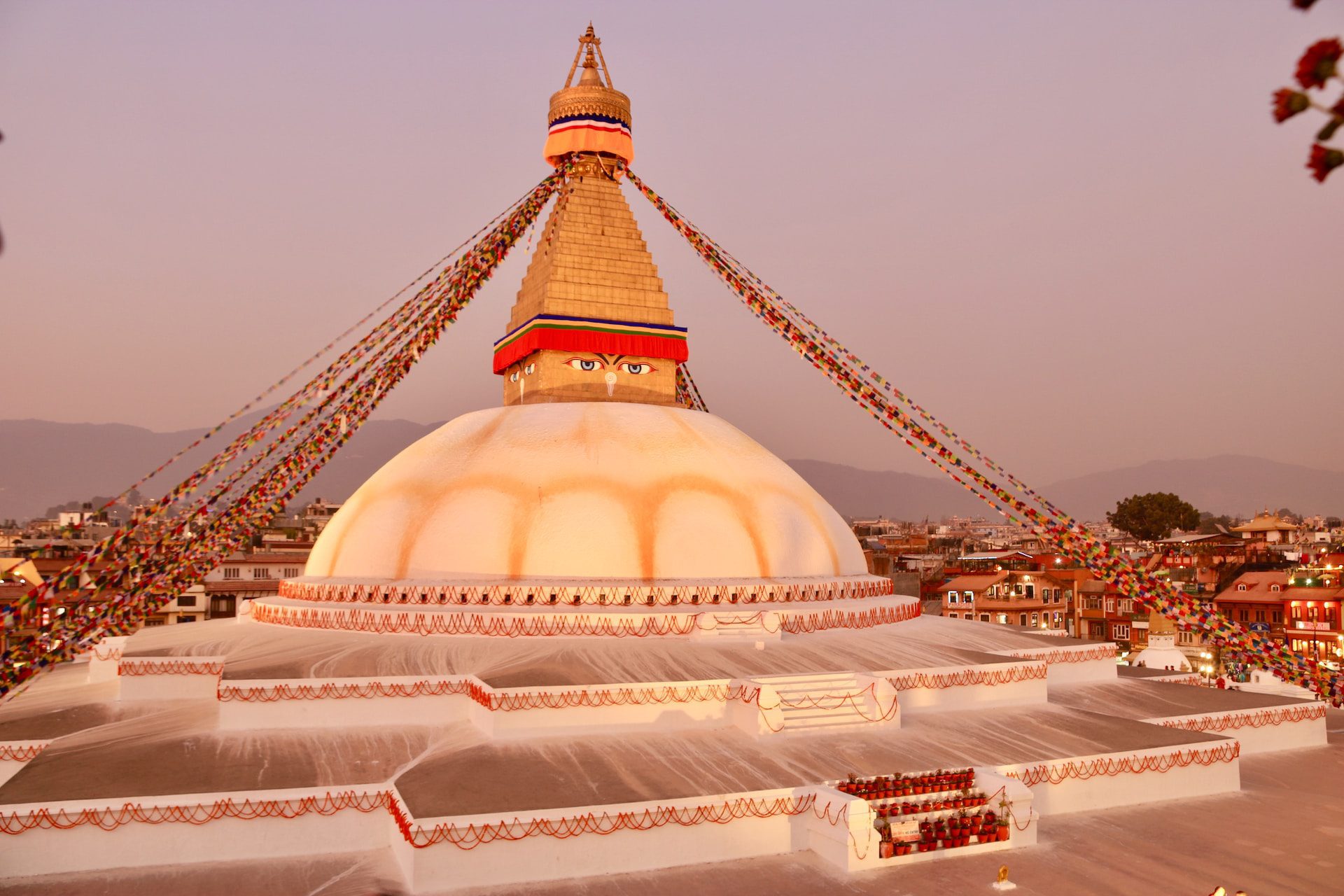
Swayambhunath Temple
Opening hours: 24 hours a day | Entry: NPR 200
Sat on a hill overlooking the city and Kathmandu Valley, Swayambhunath Temple is an ancient Buddhist site and one of the most iconic temples in the capital. Just 3 km from Kathmandu, the temple is known as the “Monkey Temple”, mainly because its imposing white dome, bronze spire and painted Buddha’s eyes are a popular spot for monkeys in the area. The oldest temple in Nepal and one of the holiest sites, you can hike up the 320 steps to see the holy monkeys, several monasteries, numerous shrines and statues dotted around the stupa, and marvel at some of the best panoramic views of the valley. Just like Boudhanath Stupa, you can walk “the kora”, which means walking around the temple in a clockwise motion as a form of worship or meditation.
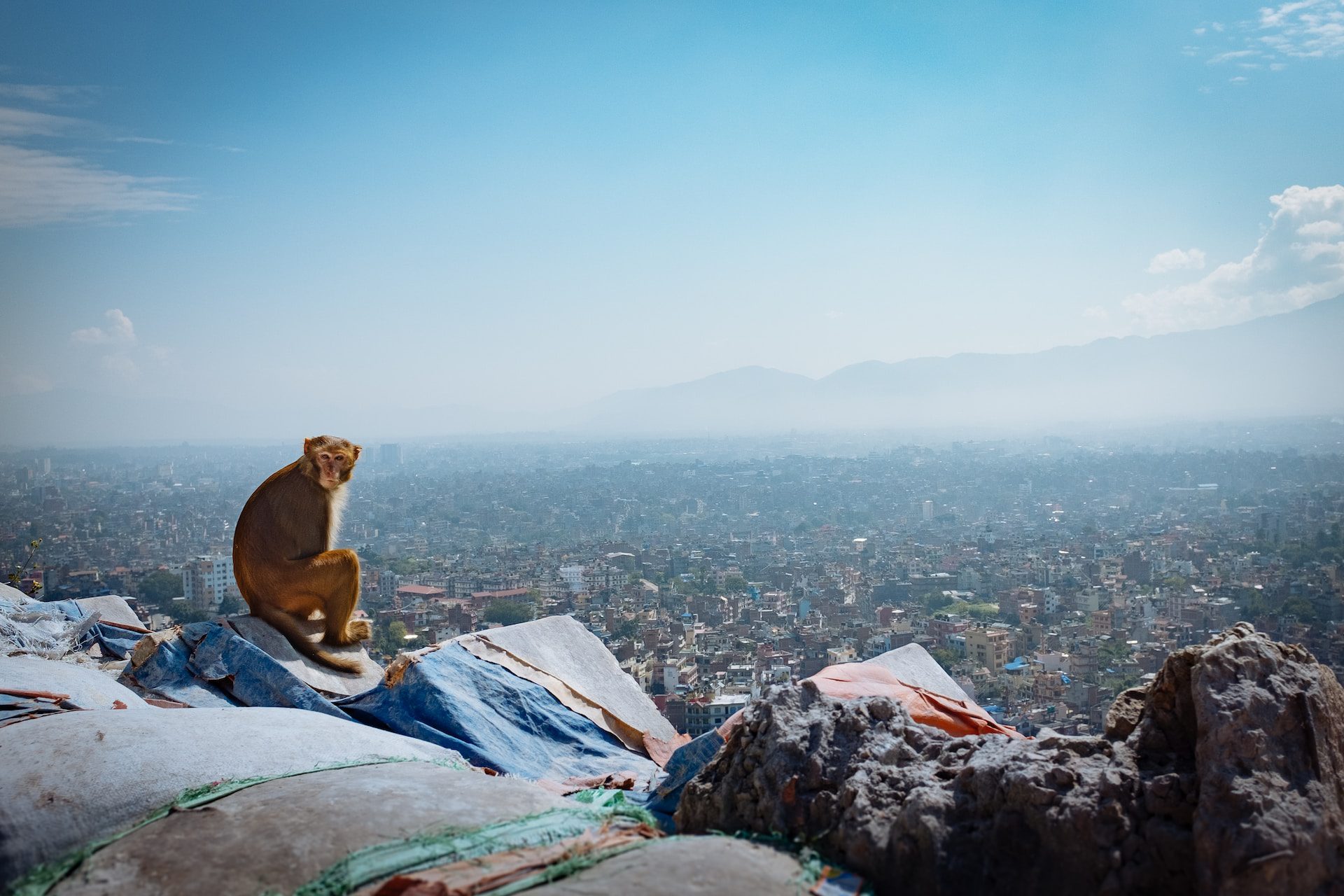
Pashupatinath Temple
Opening hours: 08:00-10:30 and 17:30-19:00 | Entry: NPR 1000
Originally built in the 5th century and then re-developed in the 17th century, this pagoda-style temple is Nepal’s most sacred Hindu site. Located on the banks of the Bagmati River, Pashupatinath Temple is dedicated to an incarnation of Shiva, the protector of animals. This holy place is commonly used for cremations and memorials, and locals often visit to grieve or remember their loved ones. Aside from the main temple which is covered in silver and boasts an impressive two-storey roof made of copper and gold, you can also visit dozens of shrines and smaller temples in the complex. Keep in mind that the main temple is reserved for Hindus only, but the rest of the complex is open to the public and you can still admire the stunning architecture of the main temple from the outside.
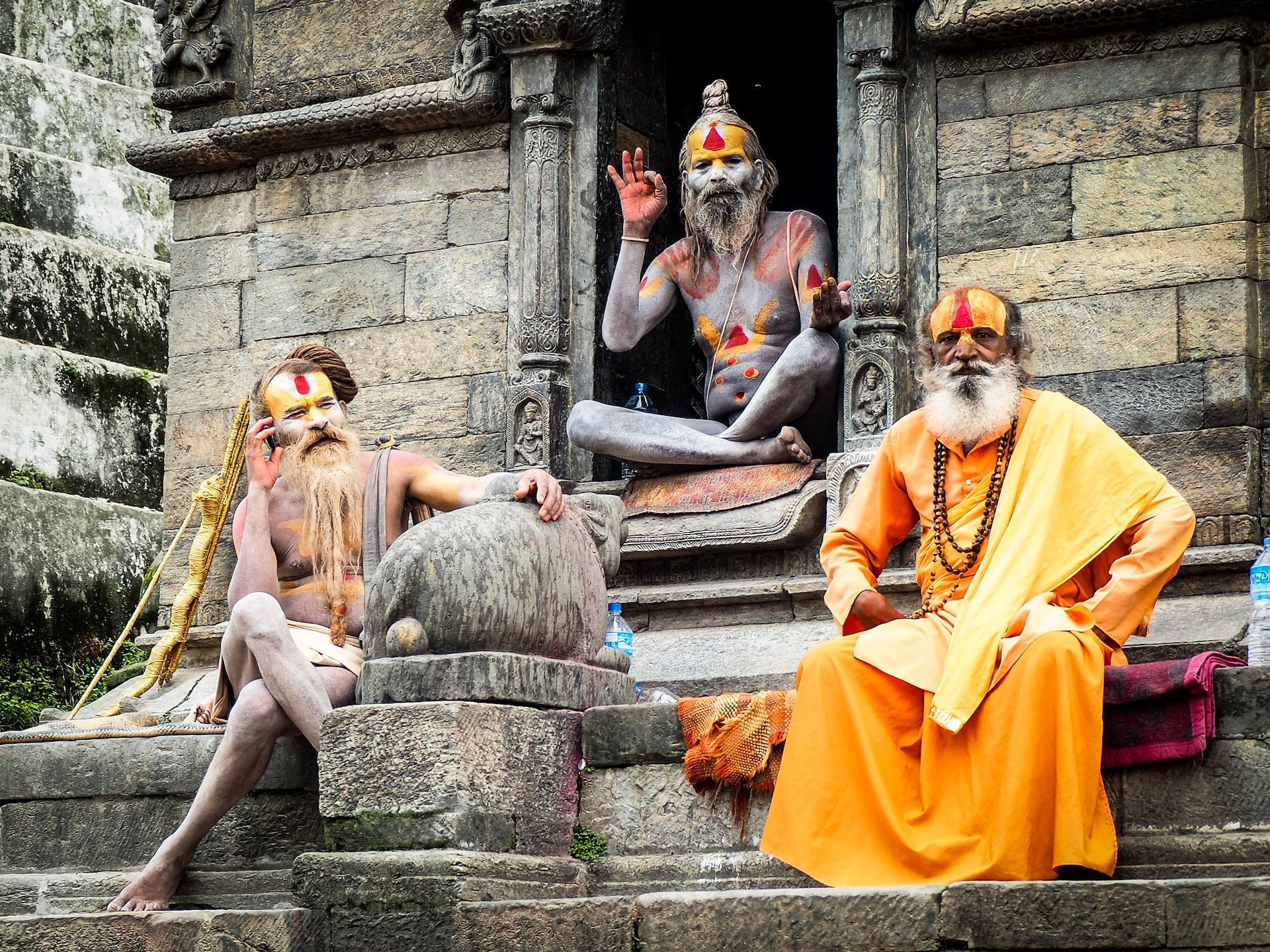
Dakshinkali Temple
Opening hours: 24 hours a day | Entry: Free
If you’re up for something a little different, Dakshinkali Temple is a famous Hindu pilgrimage site and is definitely worth a visit. Dedicated to Goddess Kali, locals partake in sacred rituals, sacrificing animals in Kali’s honour on Tuesdays and Saturdays of every week and using the meat to cook phenomenal feasts. These religious events are incredibly important to Hindus and visitors can’t enter the temple courtyard, but they can watch the rituals from the surrounding terraces. If you’ve got a strong stomach, watching these events is an incredible culturally authentic experience. You can also buy local produce from farmers along the path leading up to the temple and purchase coconuts or other offerings for the Goddess Kali. The best time to visit this gorgeous temple in Kathmandu Valley is in September or October when the Dashain Festival takes place.
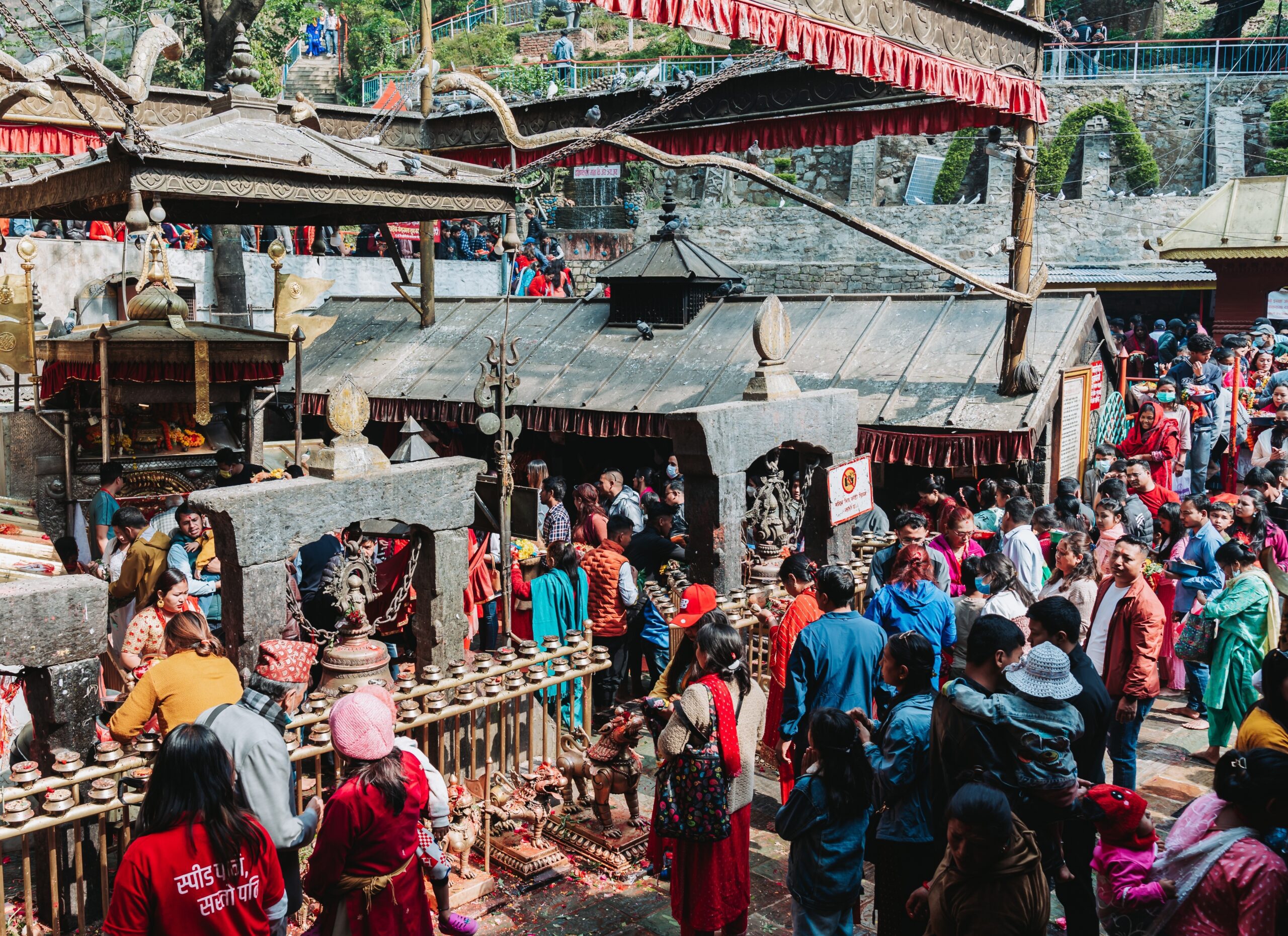
–
For a stress-free arrival, you can pre-book your Kathmandu Airport transfer with a world-renowned company such as Welcome Pickups. The second you touch down in Kathmandu, Welcome’s dedicated, English-speaking drivers will take care of all of your transfer needs and get you to your hotel or accommodation as seamlessly as possible.
